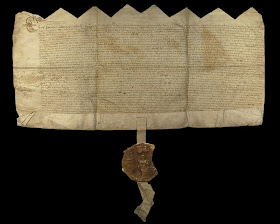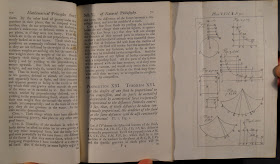 In 1536, the See of Rome Act was passed which effectively removed the last traces of Papal authority in England. This act followed the Act of Supremacy (1533) and the Treasons Act (1534) which first declared Henry VIII to be head of the Church of England and then made it treason to deny any of the king's titles including that of head of the Church of England. Many properties owned by Rome or those associated with the Catholic Church were abandoned or seized by the crown. These properties were in turn presented to various members of the court as rewards or incentives for continued loyalty.
In 1536, the See of Rome Act was passed which effectively removed the last traces of Papal authority in England. This act followed the Act of Supremacy (1533) and the Treasons Act (1534) which first declared Henry VIII to be head of the Church of England and then made it treason to deny any of the king's titles including that of head of the Church of England. Many properties owned by Rome or those associated with the Catholic Church were abandoned or seized by the crown. These properties were in turn presented to various members of the court as rewards or incentives for continued loyalty.This document is a deed of indenture from November, 1537 transferring the former priory of St. Mary and St. Sexburgha (dissolved in 1536) and a portion of the associated properties to Sir Thomas Cheney in exchange for his manor of Leigh, with Baron's Grange, in the parish of Iden, Sussex. Affixed to the document is Henry VIII's standard Great Seal, showing him enthroned on one side and on horseback on the reverse. Cheney was a powerful member of the court and served as Lord Warden for the Cinque Ports among other responsibilities. He was also reported to be a favorite of Anne Boleyn, whose marriage to Henry precipitated Henry's break with Rome.
Ask for Lansburgh 13 to see the deed.


